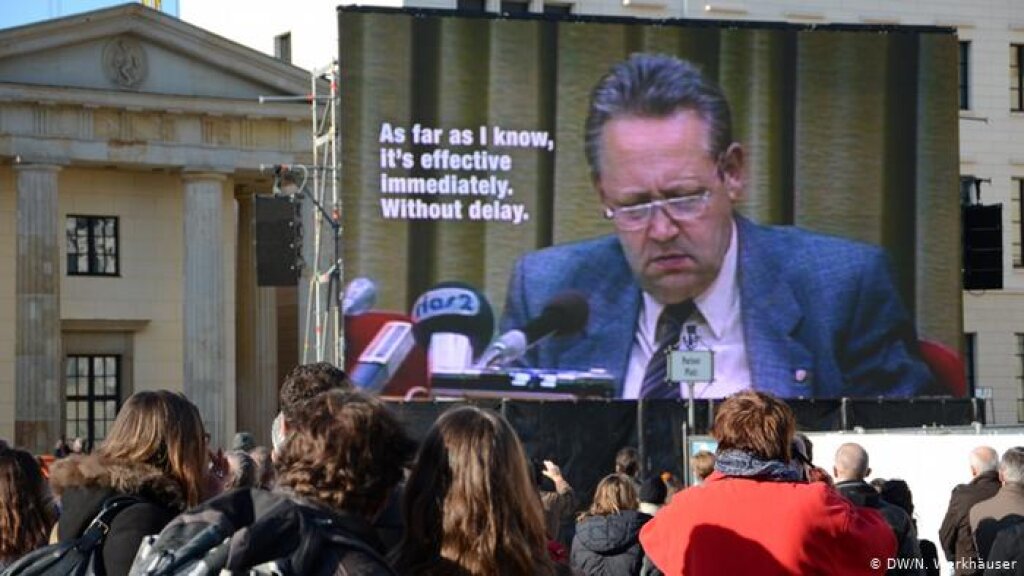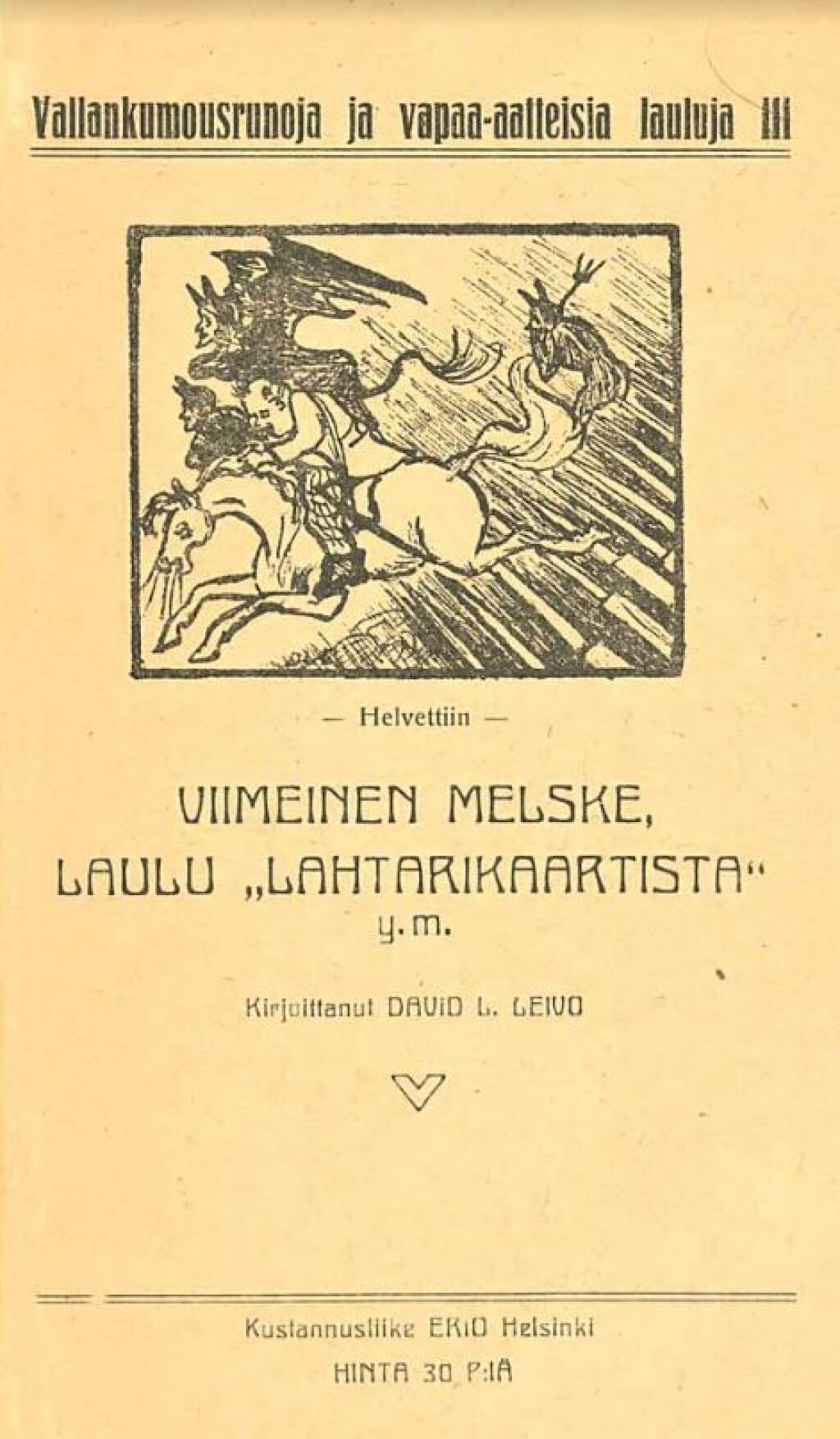Cornell Overfield is a second-year MA student at Yale with a focus on German-Russian relations since 1945.
To casual viewers, the Cold War’s revolutionary end was a two-part television special. In a live press conference on the evening of November 9, 1989, East German official Günter Schabowski mistakenly announced that new, liberalized travel rules entered into force immediately, “as far as he knew.” By dawn the next day, the East German revolution had succeeded, along two lines. It symbolically ended both the Socialist Unity Party (SED)’s reign of terror and the Cold War’s division of Europe. Two years later, on Christmas Day, 1991, millions of television viewers around the world watched as the red flag ran down the Kremlin flagpole and Mikhail Gorbachev announced his resignation. The United States entered the new year robbed of its recent rival, facing the possibilities and perils of hyperpower.
Two recent revisionist accounts explain how these moments arrived by returning to the individuals on and behind the scenes. They challenge analyses that credit the inevitabilities of superpower competition, economic destiny, or ideological bankruptcy for bringing the GDR and USSR to an end. In The Collapse (Basic Books, 2014), Mary Sarotte argues that converging contingencies allowed a coterie of East Germans to realize their revolution. Serhii Plokhy’s The Last Empire (Oneworld, 2014) narrates the Soviet Union’s final months and argues that nationalism and the contingencies of incomplete knowledge drove the USSR’s 1991 dissolution, even as great-power politics sought to preserve the Soviet Union. Each narrative persuasively puts individuals back into the spotlight as the drivers of these world-historical moments. Taken together, these works offer insights into the world’s geopolitical revolution of 1989-91, how developed states fail, and the limits of U.S. power in the face of individual actors.
In The Collapse, Sarotte attempts to understand how the world awoke on November 10 to an opened Berlin Wall that marked "the point of no return in the collapse of the Cold War." She musters an unprecedented blend of archival records and interviews to argue that citizens of the GDR made the 1989 revolution. East German pastors and activists, bureaucrats and border guards come to the fore as key figures who made their decisions in defiance of superiors or the state and under the shadow of uncertain results and possible violence.
First, peaceful protestors successfully marching the full circuit of Leipzig’s ring road on October 9 confirmed that the people could mobilize. This success also suggested (but did not guarantee) that the government finally recognized that violence could not suppress dissent. Next, a chain of complaints from Prague and protests in East Germany drove the Politburo, distracted by Egon Krenz’s post-coup reshuffle, to adopt a new travel law without appreciating changes from an approved draft. This is the book’s strongest section. Sarotte traces Günter Schabowski’s impromptu comments back to a mid-level official in the Interior Ministry, who exceeded his authority and rewrote the new travel rules in the belief that it would save the GDR. Finally, after Schabowski’s conference, East Berliners gathered at checkpoints into the West and eventually persuaded confused guards to allow them to pass back and forth. With this act, the SED’s hold on East Germans had dissolved. Sarotte explicitly argues that this chain of contingencies cannot be taken for granted. Had any one episode occurred differently, the SED may have kept its grip on East Germany, or Germany might have remained politically divided.
Serhii Plokhy seeks to understand how the Soviet Union fell apart despite improving relations with the United States. Like Sarotte's book, his account focuses on individuals instead of impersonal forces or economic ledgers. Plokhy, however, takes a more standard approach as he traces the behavior of leading politicians in the Soviet Union and its constituent Soviet Republics. Per Plokhy, the Soviet Union’s dissolution represents the final triumph of national self-determination over an empire led by ill-informed cadres. In Moscow, Boris Yeltsin’s heroics at the White House made him Russia’s champion against the Soviet Union, which Russians increasingly saw as an oppressive imperial power. In Kyiv, both before and after the coup, officials pursued an independent path that deprived the imperial metropole of this vital center of power. These two tendencies culminated in mid-December, when Yeltsin and other nationalist leaders agreed to replace the USSR with the Commonwealth of Independent States. Assessing the international dynamics, Plokhy contends that the Bush administration sought to prop up Gorbachev to preserve stability and maintain a reliable partner in the Kremlin.
In both the USSR and the GDR, the Communist Party’s control evaporated nearly overnight, in similar circumstances. In both narratives, Gorbachev emerges as an indecisive, hands-off leader whose inaction produced openings for daring actors to lead the GDR and USSR to their graves. First, in both the GDR and the USSR, coups created openings for otherwise impossible developments, whether the GDR’s new travel rules or Yeltsin’s defense of the White House. Second, senior state officials mistrusted one another, hindering their ability to respond decisively. In contrast, civilians and protestors succeeded by repeatedly trusting total strangers and possible secret agents.
Third, Sarotte and Plokhy note that poor communication and outdated information crippled both leaderships at key moments. In the GDR, frontline officials begged for guidance in Leipzig on October 9 and at the Wall on November 9, while senior officials only slowly appreciated the emerging crises. When Gorbachev returned to office after the failed coup, he continued as if power had not shifted from the Party to the people and found himself increasingly isolated from and ill-informed about intra-Republic scheming. These three similarities persist despite the widening gap between the reformist USSR and the neo-Stalinist GDR, which suggests that these may be essential ingredients in any successful, peaceful revolution.
Sarotte’s work also contributes to the continuing debate about the Cold War’s periodization. She repeatedly names the Berlin Wall’s opening as the symbolic end to the Cold War. Her emphasis on contingency implies that without the particular cocktail of circumstances she describes, non-historians might understand the Cold War’s end much as they viewed its origins: as the result of gradual, permanent détente rather than a single, symbolic night.
At times, each author’s focus on individuals yields unsatisfying results. Sarotte occasionally presents replaceable heroes as indispensable. Her emphasis on contingency produces an account in which the slights suffered by a single senior officer at the Bornholmer Straße were essential in translating Schabowski’s comments into a Berlin-wide celebration. She simply waves away the circumstances driving other gate openings. However, with throngs at most intra-Berlin crossings, other senior checkpoint officers faced the same pressures from the crowd and communication breakdowns with superiors, and so may have decided to open the gate independently. In contrast, Plokhy often presents protestors, particularly during the coup’s drama, as a faceless mass, apparently without any motivation beyond nationalism. Surely other grievances, such as isolation and stagnation, also helped drive hundreds of thousands of Soviet citizens onto the streets.
Despite the occasional tunnel vision produced by Sarotte’s focus on individuals, her account reminds readers that not all decisive events evolve around, or even are primarily shaped by "great powers." At times, they play no role at all. She shows that neither Reagan’s injunctions at the Wall nor Kohl’s injections of cash across the Wall brought it down and the Cold War to an end. Sarotte readily acknowledges that the great powers made the month between October 9 and November 9 possible and managed Germany’s rapid unification after the GDR’s 1990 elections. Yet she argues that American, Soviet, and West German politicians and diplomats played no role on the decisive day that changed East Germany’s course from reform to reunification and symbolically ended the Cold War. On November 9, East Germans acting in opposition to other East Germans to win a better future for all East Germans realized their revolution.
Finally, each author warns against triumphalist narratives that see 1989 and 1991 as victories won by deliberate U.S. policy, whether Bush’s, Reagan’s, or Kennan’s. Such readings of these momentous events, Plokhy and Sarotte argue, have left U.S. policymakers from 1991 to 2019 with dangerous and mistaken views about the transformative potential of U.S. power. In championing a contingent history of individuals, rather than forces, finance, or ideas, both books will be valuable to anyone studying past diplomacy or making today and tomorrow’s foreign policy.



